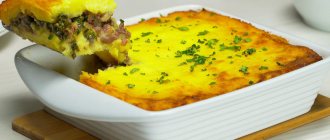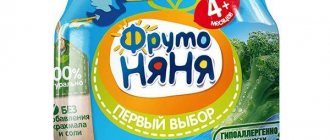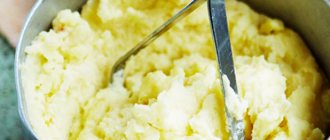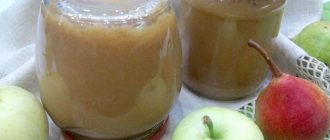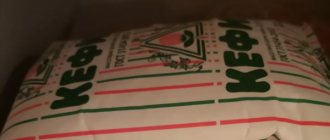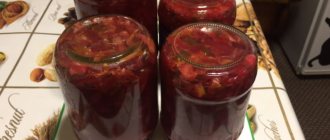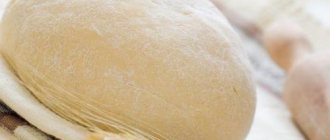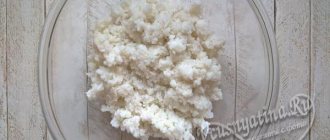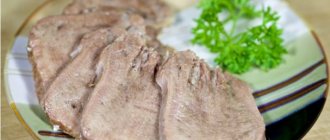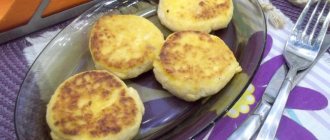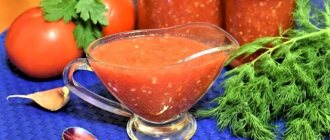Thanks to vegetables, the child receives nutritious carbohydrates, as well as a number of vitamins. The fiber and pectins contained in them help remove harmful elements from the body. When the baby is not gaining weight well, the pediatrician may recommend porridge as the first complementary food, but the option with vegetable puree is suitable for children with digestive problems, especially for those who have constipation.
Why is zucchini considered optimal for first feeding? It is easy to prepare, delicate in taste, and the possibility of allergies from it is minimal, but we will talk about this later. A large amount of nutrients helps make the baby healthier. Sometimes children under one year old develop physiological anemia, and zucchini helps cure it.
Complementary feeding is a very important process in a baby’s life. And the first dishes recommended for feeding small children are vegetable purees, for example from zucchini
Benefits of zucchini
It is ideal to start complementary feeding with zucchini, because it has a wonderful effect on the body, thanks to the following beneficial characteristics:
- The puree is well accepted by the child’s body, helps improve digestion, preventing constipation, and also protects the baby from possible bloating and colic.
- Hypoallergenic product. Allergic reactions are extremely rare.
- Zucchini contains a whole range of vitamins and microelements necessary for the full development of the baby. Among others, there are magnesium and phosphorus, iron and potassium, as well as vitamins B and C.
The positive aspects of the vegetable do not end there:
- ease of preparation: even a novice housewife can handle the recipes;
- low price for the product in the summer;
- fresh frozen product can be introduced at any time of the year;
- It cooks very quickly, which means mom saves a lot of time.
Zucchini has beneficial properties that are necessary for a child, and the vegetable is hypoallergenic, which is important when feeding for the first time.
Rules for introducing complementary foods
Vegetable purees appear in the diet of infants closer to six months, if the child is breastfed, and after 4 months, if the baby eats formula. Let us recall the basic entry rules:
- the puree must be one-component, homogenized, without salt and sugar;
- It is better to give the sample in the morning (at about 11:00) or at lunch (about 14:00);
- first complementary feeding - then breastfeeding or an adapted formula;
- the first dose is small - from 0.5 to 1 teaspoon, after a week the dose will gradually increase to 50 grams; as a result, by the age of 7 months the baby should eat up to 100 g, and closer to the age of 150 g per day;
- if the baby does not want to eat, try feeding the product a week later or offer another vegetable for introduction, after consulting with your pediatrician;
- You should not conduct taste experiments if it is too hot outside or the child is not feeling well - the attempt is unlikely to be successful.
When introducing complementary foods with zucchini, it is extremely important to know when to stop. If you notice a child has a wonderful appetite and a desire to eat more, you should not do this. How much should you give in the end? Give strictly the prescribed dose, otherwise you may get digestive problems.
Before you start giving your baby complementary foods, consult your pediatrician, he will suggest the correct feeding schedule for your baby (for more details, see the article: complementary feeding for infants)
Food diary - taking care of your child
It’s a good idea to keep a food diary where you will record all your baby’s reactions to a new product:
- bloating;
- redness or rashes on the skin;
- restlessness, moodiness;
- bowel dysfunction or gas formation.
If you notice some of the above signs, you should stop introducing complementary foods and consult your doctor. He will tell you when to start introducing food again. Most likely this will not be earlier than a month. When introducing new purees, it is advisable to choose one-component options, i.e. those in which only one vegetable is present. A mixture of vegetables or fruits will make it difficult to identify the “culprit” of poor health or allergies.
When, having bought a product at the market and subsequently prepared it yourself at home, you notice redness or rashes on the skin, then perhaps you should replace the homemade version with canned purees or use frozen vegetables for cooking. We will talk further about all possible manipulations and methods for preparing zucchini.
Choose only young vegetables for complementary feeding (more details in the article: which vegetables are good for complementary feeding?). But it’s better to buy zucchini from friends or grow it yourself
Contraindications for use
Another possible reaction after eating zucchini is the appearance of flaking on the skin. This reaction is absolutely natural and has nothing to do with allergies. To prevent this, mix the zucchini puree with a small amount of water in which the zucchini was boiled or add a little breast milk. Excessive peeling can be shown to a doctor and you can get qualified advice on this matter.
Product selection and preparation
The most reliable method of preparation is to make your own puree from your own vegetables, grown on your own plot, and then boiled or steamed at home. What if a baby born in the summer has to try his first complementary foods in the winter? You can find a fresh product in stores, but most likely it will be an imported version. It may contain nitrates and other harmful substances.
Zucchini keeps well in the freezer. In the same way, you can save any other vegetables for your baby.
Solutions in this case may be as follows:
- Freeze fresh vegetables for the winter ahead of time. Buy fresh green young vegetables (you can take greenhouse varieties), their length should not exceed 20 cm. Tender pulp will allow you to easily remove the seeds. When choosing, keep in mind that the surface should be smooth, slightly shiny, without spots or other irregularities. It is advisable to buy from a trusted seller.
- Jar puree. Any product on the shelves of children's stores is certified. In this case, the most important thing is to read the composition. Ideal composition: zucchini and water. It is advisable to avoid “pear-shaped zucchini” in a number of ingredients. It is an analogy of pumpkin, which means it is not suitable for the very first complementary feeding due to a possible allergic reaction.
How to freeze grated zucchini
How to freeze grated zucchini
Zucchini pancakes are very healthy. For a winter dish, you can make a special preparation, which is very simple to do.
- Zucchini is washed, dried and cleared of seeds.
- The resulting pieces are grated.
- The juice that will inevitably appear in the plate must be drained and the grated mass squeezed out.
- The resulting mass is leveled on the board to remove excess moisture.
- All that remains is to distribute the grated zucchini into containers in portions and put them in the freezer.
Important!
To prepare zucchini at home for pancakes, you can take overripe fruits. They don't have much juice, and they don't taste much worse than the young ones.
You can simply freeze grated zucchini or immediately add herbs and spices to them, which are usually placed in pancakes. But it is important not to add salt right away, because it provokes the release of juice.
Preparation options for first feeding
Before cooking, it is important to properly process the product:
- Wash the vegetable in cool running water.
- When preparing puree for a child of the first year of life, you need to remove the skin and rinse again with water.
- Having purchased the product in a store or market, you need to soak the vegetables for about 2 hours in cold water with salt. To do this, you first need to cut each fruit in half. These manipulations are done in order to get rid of possible nitrates.
How to cook zucchini for your favorite little one? We will give you some simple and delicious recipes. All of them are simple and accessible.
In a saucepan
- You need to cook with filtered or purchased clean water. Boil some water.
- Cut the zucchini into cubes and place in boiling water. Boil for about 10 minutes until tender.
- The prepared vegetables should be ground in a blender, or even better, then pass the puree through a sieve, so the consistency will become even nicer and more uniform. Add some vegetable broth.
You should not cook for long, 10 minutes is the maximum. Excessively long cooking will lead to the loss of valuable vitamin C. The measured time period is optimal for preserving all the usefulness of the vegetable.
In a slow cooker
- Peel the fruit and remove the seeds, then cut into rings.
- Place the chopped pieces into the slow cooker.
- To start cooking, you need to press the corresponding button on the panel (“Stewing” or “Steaming”). Set the process time to 10 minutes.
- The method for chopping zucchini was indicated above or you can use any other option convenient for you.
For a couple
Steaming is possible using a simple pan:
- Pour water into the pan, about ¼ of the volume, and place a sieve or colander on top.
- Washed, peeled and seeded, the fruits should be placed in a sieve.
- Boiling water will provide the steam needed for cooking. Such a simple device ultimately copes with its task no worse than a double boiler.
- To make the process go faster, it is better to cover the vegetables with a lid.
Zucchini puree for babies is the beginning of a new “adult” life for your little one. A healthy vegetable not only introduces the baby to the food of mom and dad, but also gives a lot of useful nutrients that are so necessary for active growth and development. With its help, you can show the taste beauty of food, but do not overdo it. Do not put pressure on the baby when feeding. Approaching the age of 1 year, your baby will master many more new dishes. Do not forget to listen to the advice of doctors so that the process of accustoming to new things is pleasant and comfortable for the baby.
The problem of first feeding worries all parents of infants. It should start at either four or six months. And this must be done, since breast milk and formula no longer cover all the vitamins and microelements needs of infants. Otherwise, the immune system will not be able to mature enough to resist countless diseases.
Rules for freezing raw zucchini for the winter
The process is simple, and even inexperienced cooks can master it. Follow a few simple rules:
- Vegetables cannot be frozen entirely. Cut as you like: rings, cubes, strips.
- After chopping, remove excess water by squeezing out the pieces by hand. Excess juice will make the product watery after defrosting. You can’t even pick up the pulp with a fork. If you succeed, you will still be upset - it won't taste good.
- Place the pieces only in airtight containers - containers with a tight-fitting lid, special bags for freezing.
- Create truly northern conditions: set the refrigerator compartment temperature as low as possible (most often -20 degrees).
| Important! All the recipes we offer are applicable for raw vegetables. However, it is better to carry out blanching - alternately immersing the product first in boiling water (2-3 minutes), then in cold water. Often the container is supplied with ice. The procedure will make the pulp more tender and the taste richer! After processing, frozen fruits last longer. |
Photo pixabay/congerdesign: You can’t freeze vegetables whole; cut them in your favorite way.
Useful properties of zucchini
Zucchini is called the northern pineapple. It's not about the taste, but about the unique composition of nutrients that this vegetable contains:
- vitamins: C and B
- trace elements: sodium, potassium, magnesium, iron, phosphorus
- very soft fiber
Zucchini has a multifaceted effect on a child’s body:
- vitamin group increases immunity and participates in the formation of the nervous system
- the mineral group saturates the blood with oxygen, improves nutrition of all systems of the child’s body and especially the brain
- fiber improves intestinal motility and is a very mild laxative
- water-salt balance is normalized
Zucchini is an ideal complementary feeding option at any time of the year.
One-component zucchini puree is considered the best first complementary food for babies all over the world. Zucchini can even be frozen and used later in the winter. No allergens were found in this vegetable. It is well tolerated by the infant's body. Normalizes stool, relieves constipation and helps the excretory system switch from milk or formula to plant foods.
Breastfed children should start feeding children no later than six months. Formula-fed babies are given complementary foods as early as 4 months. At this age, the stomach and intestines can already digest plant foods.
Zucchini was chosen as a baby's first complementary food because of its neutral taste. Its closest relatives: pumpkin and zucchini have denser flesh and a richer taste. Young children are initially frightened by new unusual taste sensations, and they may refuse complementary foods.
Frozen zucchini will save winter complementary foods
But what should those parents do who need to start complementary feeding in the winter? There are two options: buy ready-made purees or freeze vegetables for the winter. Store-bought baby food is quite expensive. The already opened product should be eaten within one, maximum two days. The rest will just have to be thrown away so as not to harm the baby.
Therefore, freezing zucchini for the winter will be the most acceptable option for organizing children's first complementary foods. But you need to prepare the vegetables correctly. We will need zucchini in portions. Of course, you can freeze them in large bags or trays. But during the freezing process, you will need to open the freezer several times and manually knock off the ice crusts, stirring the vegetables.
It will be much more convenient and faster to freeze the first complementary foods in ordinary disposable cups. To do this, we take small glasses (stacks) for the first minimal portions and larger ones for subsequent feedings. Pour the chopped vegetables inside and seal tightly with cling film or foil.
Such containers are very convenient to install in the freezer. It doesn't take up much space and is very easy to get. Frozen vegetables cook even faster than fresh ones.
Vitamin C is not destroyed by freezing. But it’s not worth the risk and it’s better to use quick freezing. To do this, set the maximum value of sub-zero temperature indicators on the freezer panel and wait for an hour. Once the desired temperature has been established inside, quickly place the hermetically sealed container in the prepared area. We're waiting for an hour. Checking the quality of freezing. We return the original indicators of food storage.
For vegetables and fruits, you need to have a separate shelf in the freezer or freezer. Meat and fish should not be stored together with baby food. Be careful with the pepper too. Frozen pepper is an excellent vitamin supplement for borscht and stew, but it tends to transfer its smell to other products even in this form. Therefore, if you store peppers in the vegetable compartment, pack them very carefully.
Zucchini cubes and sticks in the freezer
We recommend reading our other articles
- How to get rid of rats in a chicken coop?
- Riding horse breeds
- Growing pepper seedlings
- Recipes for lecho with carrots
Zucchini cubes and sticks in the freezer
For stews, soups, and some types of caviar, zucchini is usually cut into cubes or cubes. The size of the cubes and bars depends only on personal preference. If you like large cubes of vegetables in your soup, then you need to chop more than a centimeter per cube, and if you like small pieces, then you can chop more finely. How to freeze zucchini cubes? The process is very simple and accessible to everyone.
- Vegetables are washed and peeled (from large seeds, pulp and rough areas of the peel).
- The tail and the place where the stalk is attached are cut off.
- Zucchini is chopped into cubes or cubes of the desired size.
Interesting!
To prevent the zucchini from becoming one large piece of ice, you need to take them out every 1-3 hours and shake them until they are completely frozen.
- To get rid of excess moisture, lay them out on a paper or waffle towel for 20-30 minutes.
- When the pieces are dry, they are poured into a convenient container and placed in the freezer.
It is recommended to place zucchini in containers in portions. This way, you won't need to defrost all the zucchini to prepare the dish or chop off a specific part (which is not always possible). This is just an additional waste of time and effort. If you immediately arrange the pieces in the quantity needed for a particular dish, the cooking process will be easier.
How to properly prepare frozen zucchini puree
Under no circumstances should the zucchini be defrosted, otherwise it will turn into an unpleasant mush. Fill it with a small amount of water and boil for 5-8 minutes. Test for readiness. Mash and rub through a sieve.
Frozen vegetables can also be cooked by steaming or in a slow cooker. Do what is most convenient for you personally. The taste and vitamin qualities will not change due to this.
Frozen vegetable puree will also need to be flavored with breast milk. Perhaps even more thoroughly. Freezing changes the natural taste somewhat. Pediatricians do not recommend salting or sweetening foods for children under one year of age.
Freezing zucchini cubes
To begin, wash the zucchini thoroughly in water and cut off the ends.
Before freezing zucchini, be sure to have ice or ice water in the freezer. Ice is needed to instantly cool the zucchini after blanching, and this is necessary so that the zucchini can be stored longer in the freezer and not lose its taste, color and texture. When blanching, the enzymes of vegetables are destroyed, which contribute to rapid spoilage of food.
When stored for a long time without blanching, zucchini can change color, become tough, and tasteless.
In my opinion, freezing zucchini in cubes is the most versatile. They can be added to soups, stews, stewed with sour cream, spices, etc.
Cut the zucchini into cubes with sides ranging from 1 to 1.5 cm.
Boil water and put the zucchini cubes in for 2-3 minutes; there is no need to cook them for a long time (no need to salt the water). If there are too many zucchini, it is better to blanch them in batches so that the water does not cool and all the zucchini are blanched evenly.
Next, pour the boiling water along with the cubes into a colander, pour them into a deep container and immediately pour cold water with the addition of ice cubes - you need to stop the thermal process as quickly as possible and cool the zucchini.
After the zucchini has cooled well, you need to drain the water from them, placing them in a sieve or colander. Place the cubes on a clean kitchen towel (waffle or cotton baby diaper is best) so that they do not touch each other. Let them dry thoroughly before freezing.
Some of the cubes can be frozen in their original form, and some can be mixed with chopped herbs - dill, parsley, cilantro to get a mix of zucchini and herbs. This preparation will look more advantageous in a dish.
Dried zucchini, with or without herbs, needs to be frozen in the freezer. To do this, scatter the zucchini on a dish or flat tray covered with cling film so that the zucchini does not freeze. And so that cubes of zucchini with and without greens do not mix with each other, they can be separated with a wooden spoon, rolling pin or roll of parchment.
Leave the zucchini cubes in the freezer for 3-4 hours at -18 degrees or below. If you leave the zucchini overnight, they may become heavily covered with frost; such preparation will not look very attractive and after defrosting, the zucchini will lose a lot of moisture.
Place the frozen zucchini cubes into a tight plastic bag (it’s best with a zipper), sign the label, remove the air from the bag and close tightly. It is convenient to remove air using a drinking straw - you can see how to do this correctly here.
Place bags of frozen zucchini cubes in the freezer for storage.
Secrets of tasty and healthy zucchini complementary foods
Secret 1: the right choice
It is better to buy vegetables for harvesting for the winter from a household plot or to grow them yourself, if possible. Fruits with pale green skin are best. A young zucchini can be seen by its tender skin. It can be easily cleaned off with your fingernails. It is advisable to not only wash store-bought vegetables thoroughly, but also soak them in water for 20 minutes.
Secret 2: cook without losing vitamins
Vitamin C is destroyed by prolonged cooking in water. Therefore, it is better to steam or bake frozen vegetables for infants. But, if the water in the pan barely covers the chopped zucchini, vitamin C will remain intact. B vitamins are not afraid of heat treatment.
The benefits of zucchini for children's bodies
Fresh zucchini, especially milky ripe ones, can be safely called a natural medicine , so they should be eaten regularly by both adults and children. The taste qualities of this pumpkin crop are weakly expressed, so they go well with any type of
- vegetable
- meat
- and dairy products.
Composition of vegetables
To understand how beneficial this melon crop is for the baby’s body, you need to know its composition. Zucchini contains up to 95% structured water, as well as
- squirrels
- fats
- carbohydrates
- minerals
- and vitamins (C, group B)
Calorie content of zucchini
In terms of energy value, this dish is a low-calorie product - its energy value is only 200 Kcal per 100 grams of product.
Benefits of zucchini for children
Many babies most often suffer from anemia , a disease in which the amount
- red blood cells
- or hemoglobin
in their blood is below normal levels . A sufficient level of hemoglobin in the blood plays a huge role in the health of babies. Thanks to hemoglobin, the supply of oxygen to the body tissues improves, and the child better tolerates various
Hemoglobin also has a positive effect on the full development of the child’s body and the growth of cells and tissues. This vegetable has an amazing property - they are able to raise the level of hemoglobin in the blood and significantly
- influence the body's circulatory system,
- nourish the heart muscle,
- strengthen blood vessels , thanks to the optimal combination of vitamins and minerals in their composition.
The baby puree recipe will be very useful for caring for your baby.
The structured water contained in the composition is most well absorbed by the child's body, affecting the digestive tract and improving metabolism.
The thin mucous membrane of a child's stomach is not able to digest rough foods rich in fiber and large amounts of protein .
Even with long-term storage, melons retain their nutritional value; vitamins and minerals are not lost over a long period. By the winter season, when many vegetables already lose part of their energy value, zucchini, on the contrary, retains all useful microelements.
Important for baby skin
Beneficial properties are also known for external use. For various skin disorders in infants, you can use grated zucchini gruel, which can work wonders by quickly and effectively restoring epidermal cells and can be beneficially poured onto the baby’s skin.
Hypoallergenic product
One of the common diseases of the 21st century is childhood allergies. Many babies suffer from this disease because the undeveloped immune system is not able to accept certain foods. This melon crop is one of the most popular vegetables in a hypoallergenic diet.
How to freeze grated zucchini
If you often make zucchini pancakes, this method is for you. In addition, this method of freezing greatly saves space in the freezer.
Grated zucchini can be frozen either raw or heat-treated; raw zucchini is a faster method.
Grate the zucchini on a coarse grater and squeeze out as much liquid as possible using gauze. Place in freezer bags, flatten and remove air from bags. Cover tightly and freeze.
If you choose to freeze heat-treated zucchini, you must follow these steps:
Grate the zucchini on a coarse grater. To boil water.
Place the grated zucchini in a sieve (it is important that there is still a deep bowl under the sieve) and pour boiling water over it well, immersing the sieve in hot water. In this case, the grated zucchini should remain in the sieve in hot water. Soak in hot water for 1 minute, drain and immediately immerse in cold water with ice.
Soak the grated zucchini in ice water until it is completely cold.
Next, raise the sieve to drain the water and squeeze the moisture out of the zucchini directly in the sieve with your fingers, pressing the grated pulp against the walls of the sieve. I highly recommend not squeezing it in your hands; blanched zucchini is much softer than fresh, and squeezing the pulp too hard in your hands can damage it and turn it into mush.
Place the squeezed zucchini in a bag for freezing, distributing the contents so that you get a flat piece (in this form it will freeze and thaw faster and more evenly, and such a piece is also very compact and takes up little space in the freezer), sign the label, remove the air and tightly close.
Place the bag of grated zucchini in the freezer on a flat surface for long-term storage.
